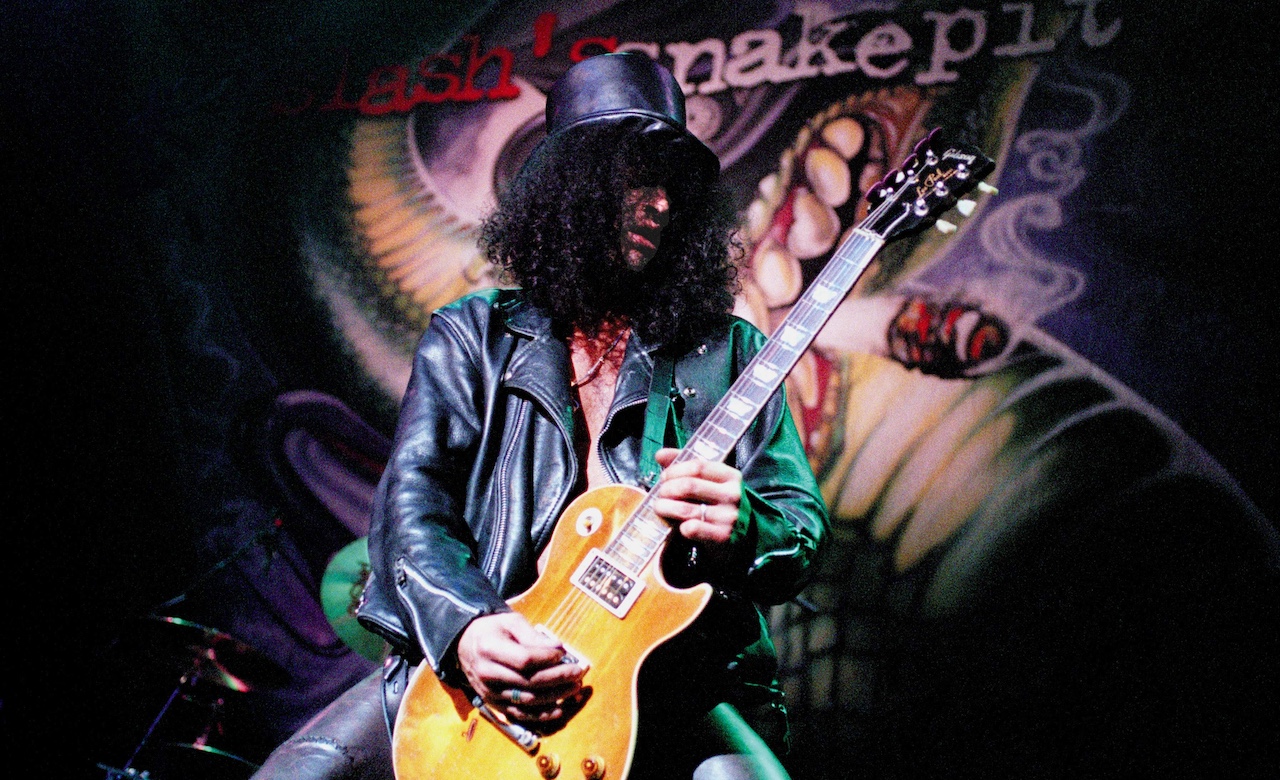Intra-band turmoil was nothing new in Guns N’ Roses but by the beginning of 1995, irreparable cracks had begun to appear. Their imperial first phase was coming to an end and the debut album by Slash’s Snakepit, released 30 years ago this week, was a crucial nail in the coffin.
On the face of it, it didn’t need to be. Duff McKagan, after all, had released his own solo album, Believe In Me, in 1993 and then was back in G N’ R mode for their covers set “The Spaghetti Incident?”, released the same year. But Slash’s extra-curricular work, and the resultant record It’s Five O’Clock Somewhere, was different. This was an album intertwined with the ever-growing discord and division in Guns N’ Roses. In an interview just a year earlier, Slash had declared he had no interest in doing a solo project. So what changed?
It's Five O’ Clock Somewhere began life as a bit of a laugh for the guitarist, a sort of musical release valve to offset the high-flying, high-pressured, multi-cogged machine that GN’ R had become. “I had to get away from Guns for a minute just because it’s such an institution,” Slash told Metal Edge at the time. “I want to get really inspired to do any new Guns stuff. Guns is big enough that it doesn’t matter what year we come out with a record.”
He had grown a little uneasy, he added, with what GN’ R had become. “We’d been doing so many ballads and conceptual videos that I started to get a little concerned about where it was going,” he said. He was keen for the world’s biggest rock band to start rocking again.
Looking for something to do in his downtime following the conclusion of GN’ R’s mammoth Use Your Illusion tour, the guitarist built a studio in his house (the titular Snakepit) and was keen to get down some of the ideas and riffs he’d come up with on the road, inviting drummer Matt Sorum over to help him flesh them out.
“I wrote 17 songs or something,” he told Metal Hammer in 1995. “After all that set was done, I was like, ‘What will I do with all this stuff?’. We had so much fun doing it that I wanted to keep the momentum going and didn’t want to sit around.”
The way Slash told it at the time, his next step was to put together a band around him, enlisting Alice In Chains bassist Mike Inez, recently-sacked GN’ R guitarist Gilby Clarke and Jellyfish’s Eric Dover on vocals alongside himself and Sorum, and then the group set to work on making the record.
But numerous interviews over the years have revealed that this version of events omits the fact that Slash originally intended those demos for Guns N’ Roses. He openly explained that he had played the barbed, bluesy central riff to instrumental Jizz Da Pit to Axl Rose and been knocked back. “It was a riff I’d been carrying around that Axl hated,” he said. “He called it ‘red neck’. He hated it so I never did anything with it.”
That pretty much sums up Rose’s opinion of everything Slash played him. By 2000, the guitarist was more open about where much of It’s Five O’ Clock Somewhere’s material had originated from. “On the first Snakepit record, I used some ideas which were really planned for the next GN’ R record,” he explained to Rock Hard magazine. “But Axl and I disagreed on the future direction of the band. I played Axl a demo with some of my ideas for songs and all he said was, ‘I don’t feel like playing this kind of music.’ I answered, ‘But this could be an excellent Gunner-record, hundred percent in G N’R style’. He didn’t really care because he only wanted to play industrial and Pearl Jam-sounding crap.”
“What people don’t know is, the Snakepit album is the Guns N’ Roses album,” Rose himself said in a 1999 interview with MTV’s Kurt Loder when asked on the state-of-play for a new GN’R album. “I just wouldn’t do it… I didn’t believe in it. I thought that there were riffs and parts and some ideas that needed to be developed.” In a catty swipe at what he seemingly considered to be the below-par quality of the album, Rose concluded, “I think I’m with the public on that one.”
Rose had obviously chosen to ignore the fact that It’s Five O’Clock Somewhere had actually sold over a million copies, and that its blend of up’n’at’em rock grooves and crunching riffs would’ve been a great next move for GN’R. Maybe the frontman had picked up on some of the album’s lyrical themes and the fact that a lot of these songs were about Slash’s problems with a problematic singer.
“All of my songs are directed at one person, though no-one picked up on it at the time,” Slash wrote in his autobiography. “I used that record as an opportunity to vent a lot of shit that I needed to get off my chest.”
Perhaps he didn’t vent enough, though. A year and a half later, he was gone from the band he’d joined in 1985 and who had gone on to conquer the world. The spontaneous nature of It’s Five O’Clock Somewhere’s creation and the intimate club shows he’d played to support it had reminded Slash of what GN’R once had and lost. For now, the Snakepit was where he felt most at home.

